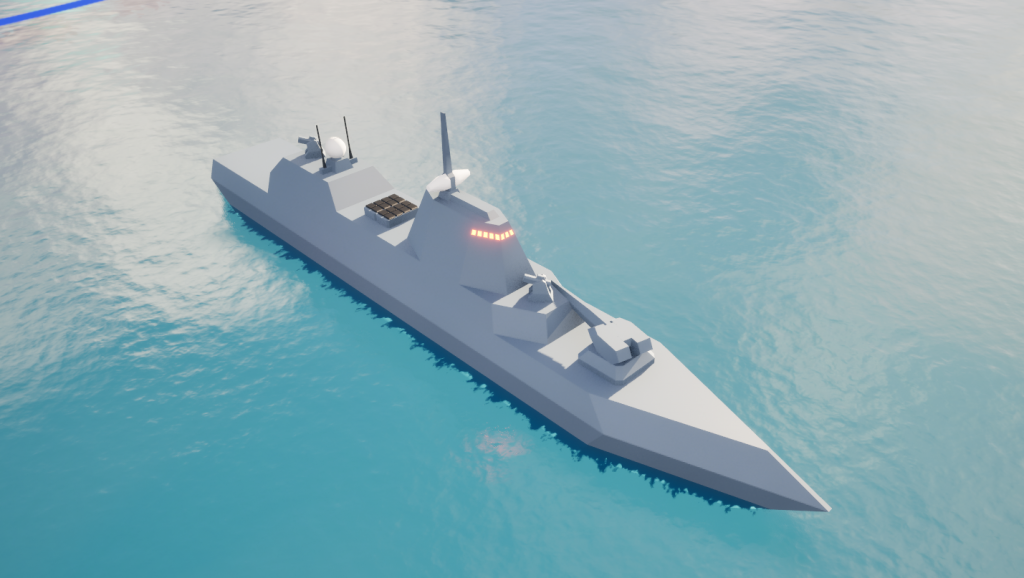
Thalassocracy is a real-time strategy game featuring naval combat between near-futuristic fleets of warships. I developed it in my free time after completing my master´s degree in game design.
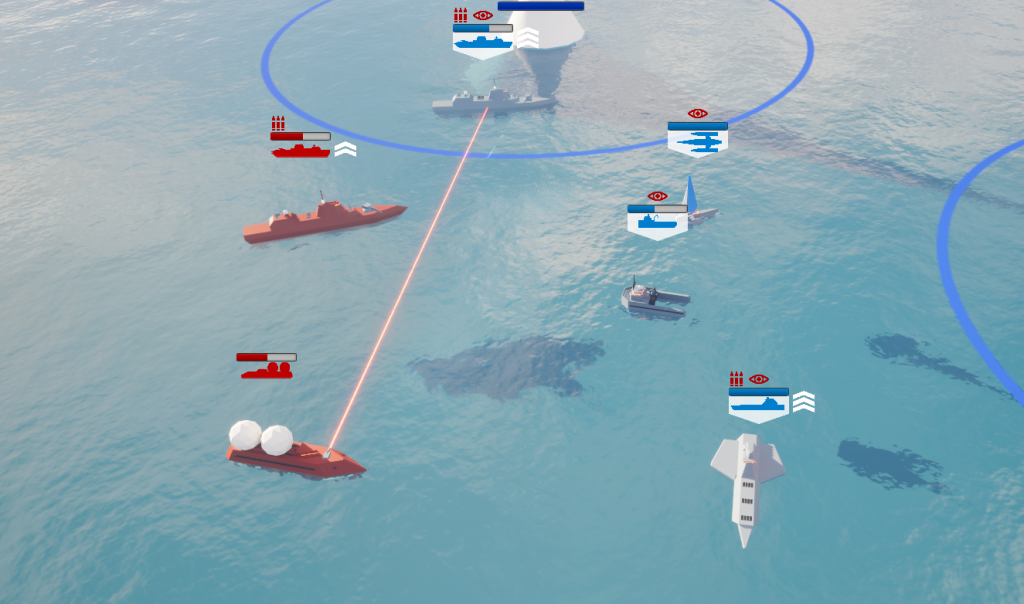
Core Gameplay
The player starts the game in control of an island. There, he can construct buildings that provide resources or allow for the production of ships. The ships are then used to push forward and capture additional islands, increasing resource income and production capacity. This will inevitably lead to encounters with the enemy ships, which try to achieve the same.
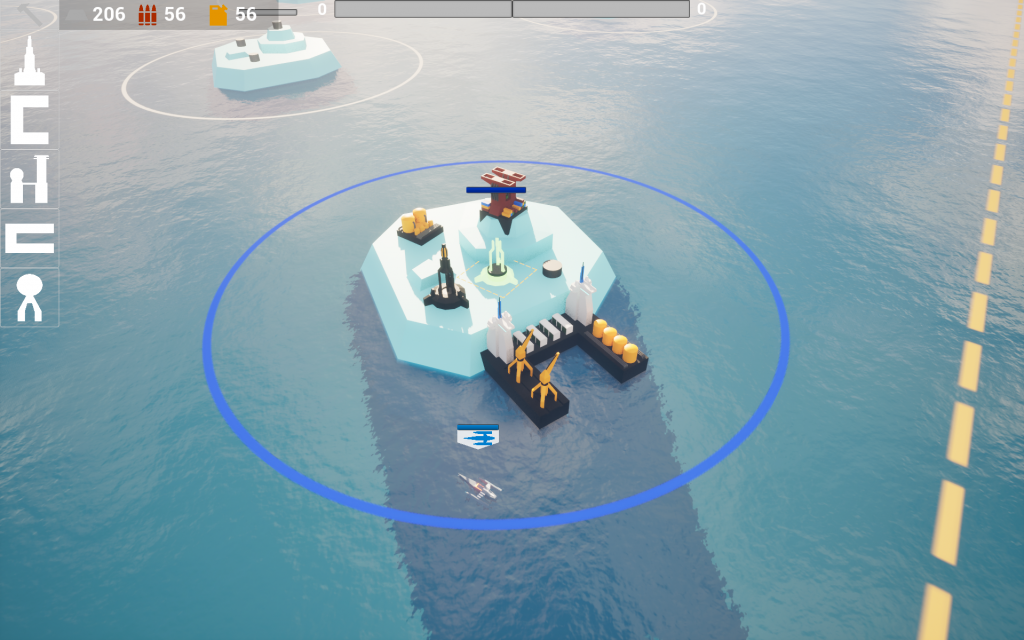
The player constructs a resource extractor on the starting island
Victory Condition
A match is won when either the enemy or the player has accumulated 500 victory points. These are granted while controlling one of the strategic locations in the center of the map. These points do not have islands and offer no opportunity to construct buildings. Their only purpose is to generate victory points.
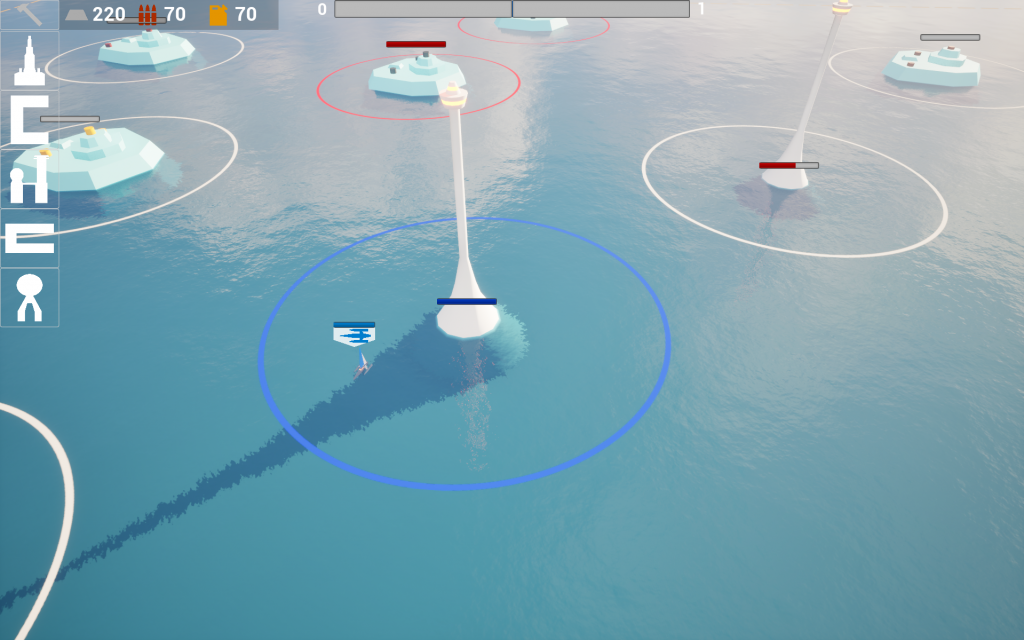
The player controls the central strategic point
Intel and Detection
Before an enemy ship can be attacked, it has to be detected by radar or sonar. The radar range of ships is indicated by the blue circle around them. Enemy ships that move within this circle are automatically detected. Ships have different radar ranges, with some specializing in this task. Radar will detect surface vessels and aircraft. Detecting submerged vessels like submarines or naval mines requires a ship equipped with a sonar.
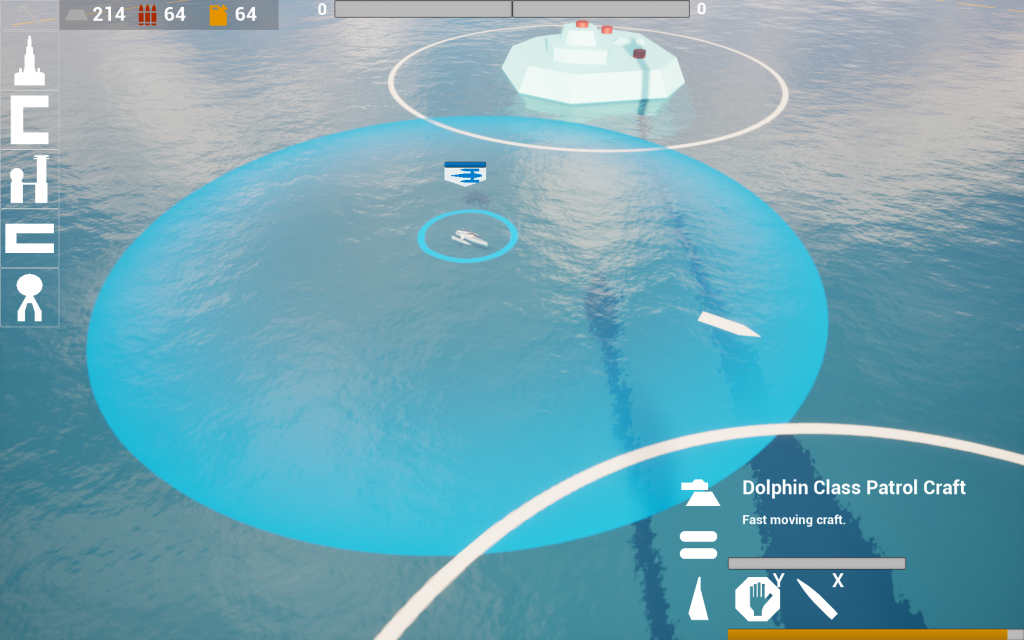
The radar range of a selected ship is indicated by a blue circle
Combat
When an enemy ship is detected, it can be attacked. Most ships are equipped with at least one weapon system. These can include guns, missiles, and lasers. The engagement range of these weapons is often longer than the ship’s detection range. This means that scouting ahead with lighter vessels, or providing radar coverage with specialized observation ships, can increase the effective range of a fleet.
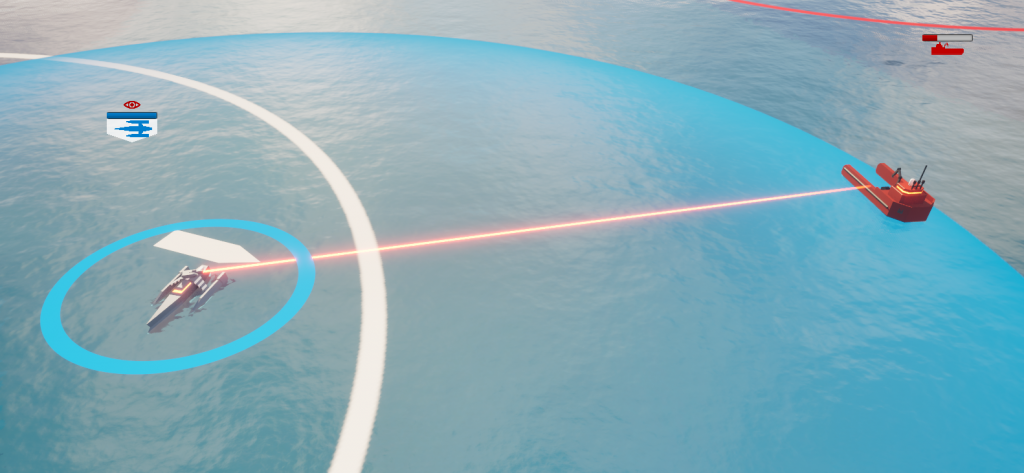
A Dolphin-Class Patrol Craft engages an enemy ship with its laser
When projectiles or missiles impact a ship, they inflict damage, reducing the target’s hull points. When the hull points of a ship reach zero, it sinks to the bottom of the ocean. Missiles generally have a longer range than guns and inflict more damage. However, they have a disadvantage in that they can be intercepted. Many ships are equipped with CIWS (Close-In Weapon System) that can shoot down enemy missiles.
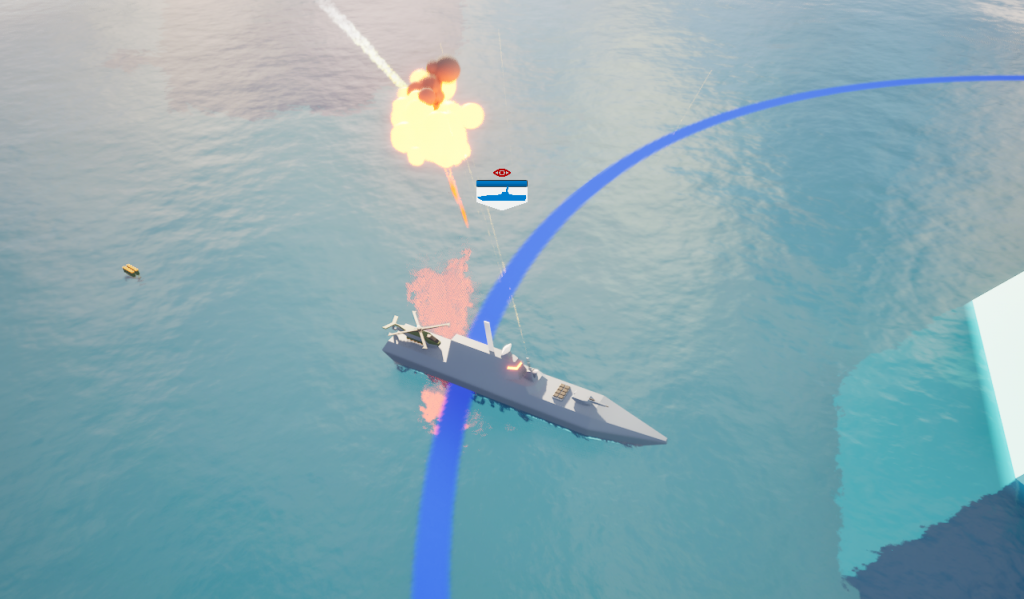
A frigate defends against incoming missiles using its CIWS
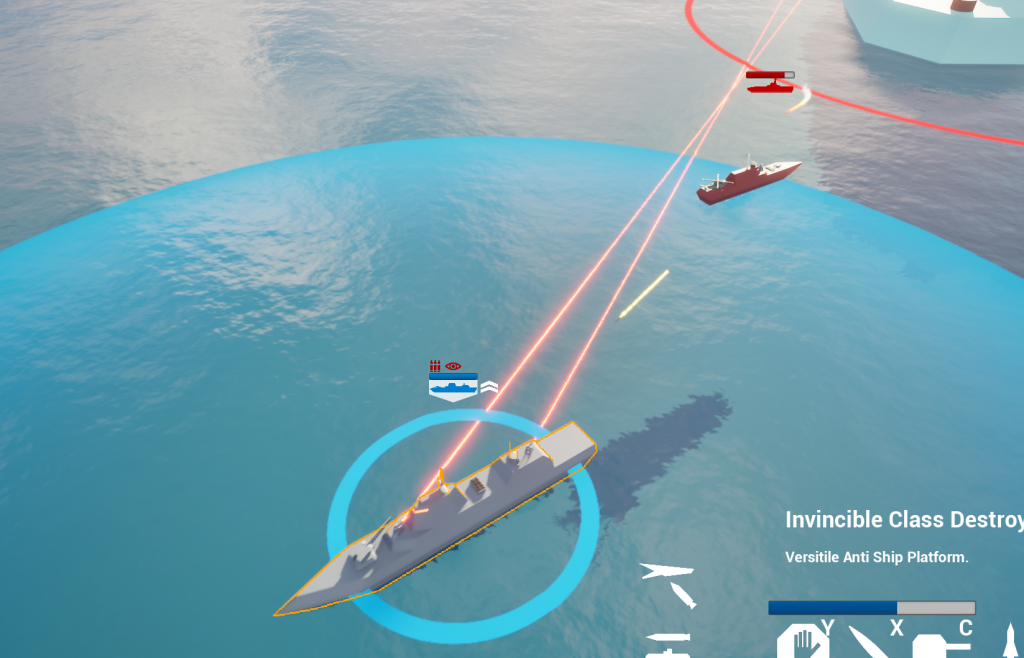
A destroyer defends against incoming missiles using its laser CIWS
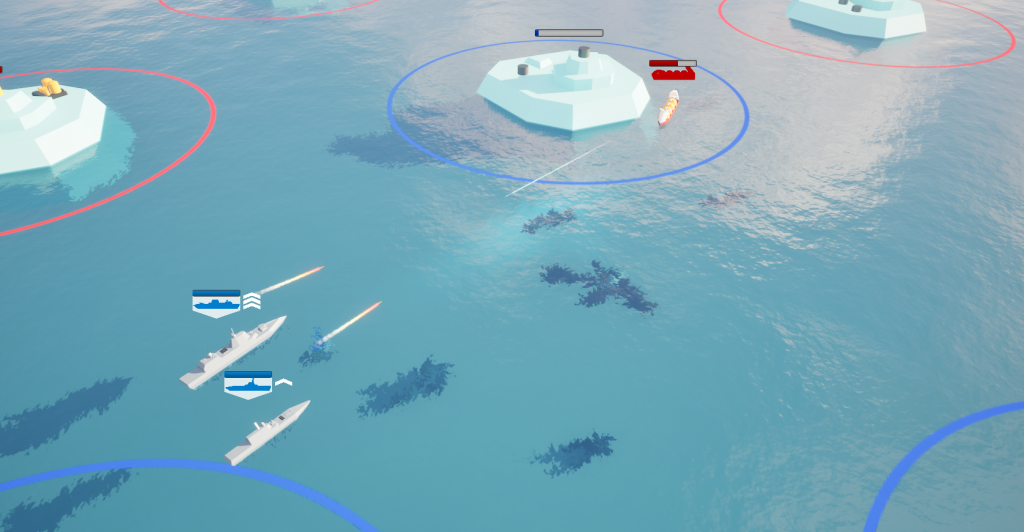
Long-range engagement with missiles and railguns
Logistics and Support
To operate, ships require resources. They consume fuel to move around and ammunition to engage enemies. Both can be restocked at ports that can be built on every island. Often, however, moving a ship out of the combat zone, back to the nearest port, takes too much time. This is where support ships come in. Support ships can supply other vessels with either fuel, ammunition, or both. Some of them are also able to repair damaged ships.

A flotilla of support ships
Crew Experience
When ships are engaged in combat, capture islands, resupply fleets, or perform any other duty, their crews will gain experience. After accumulating enough experience, a crew will level up. The effects of a level up are different for every type of ship. Some will gain bonuses to their weapons, others to their movement values, or their hull points. In some cases, a level up even unlocks new systems and abilities for the ship to use. This system encourages the players to keep ships intact, as their value increases with time.

The level of a ship is indicated by stripes next to its icon
Search and Rescue
When a ship is destroyed, its crew will escape into life rafts. They can be rescued using specialized ships or helicopters. A rescued crew is then delivered to the closest port. The next ship that is constructed at that port will be manned by the rescued crew. This will preserve their experience and level, applying the bonuses to the new ship.
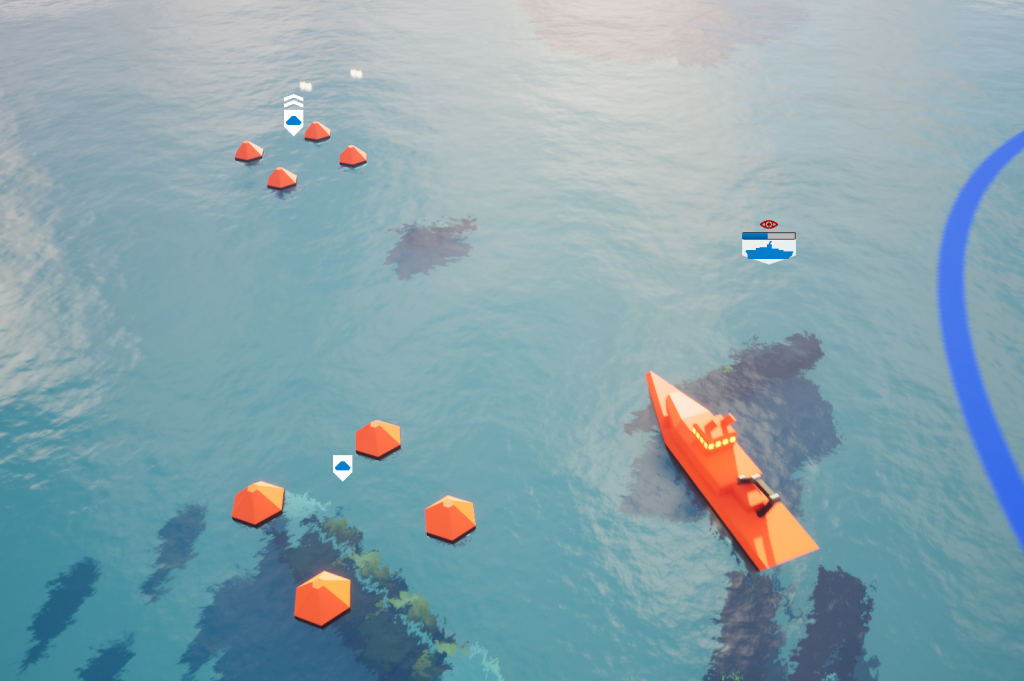
A search and rescue ship approaches a stranded crew
Submarines
Some vessels can submerge underwater. If they do so, they are no longer detectable by radar. The only way to detect them is using sonar, which not all ships are equipped with. Furthermore, submerged vessels can not be damaged with guns, lasers, or missiles. They require specialized weapon systems to be attacked. This includes depth charges, naval mines, or torpedoes.
One disadvantage of submerging is that when the vessel is destroyed, its crew won´t be able to escape into their life rafts.
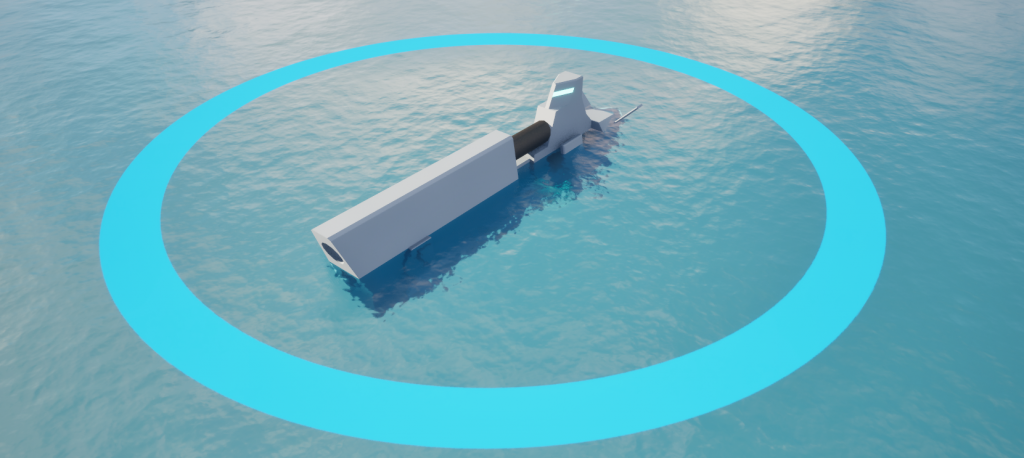
Surfaced submarine
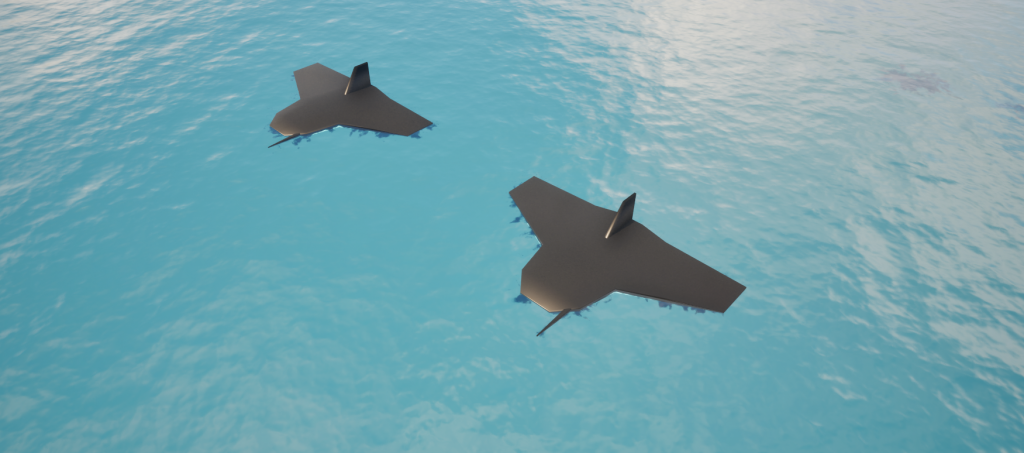
These drones specialize in anti-submarine warfare

Some ships can launch anti-submarine helicopters